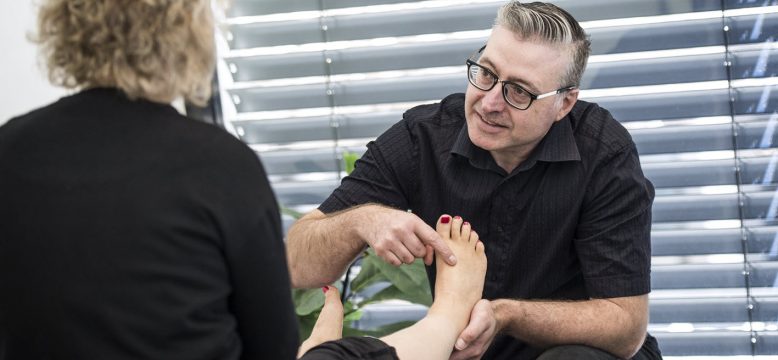How important are the exercises we show you?
Our practitioners recommend and prescribe short specific and targeted exercises as part of your corrective program. This is so that we help your tissues to rest, relax and rehabilitate. Doing this allows your tissues to better support the structural imbalance/misalignment in your feet.
You may have noticed that we don’t give out all the exercises at once when you start treatment.
So why do we give exercises in a structured way?
By introducing exercises strategically into your corrective program, we can improve specific areas of the feet and legs that have been overworked or are weakened due to those misalignments. The goal is to strengthen, stretch & stabilise the supporting structures. This includes the ligaments, muscles and tendons (soft tissues) surrounding your joints.
Getting the order and timing of your exercise program right maximises the benefit of your exercises. So that your joints can be supported to function more normally quicker.
What do foot exercises actually do?
- Stretch the tissues and break up any restrictions in your feet. So that when we work on your feet with Foot Mobilisation Therapies, the feet are more open to treatment, and
- To help hold those structural changes between visits.
The reason we introduce the exercises one at a time is so that we don’t overwhelm your body. That way if you do get a negative response, we can identify the exercise that has contributed it.
In contrast, if we recommended multiple exercises at once and a negative result is produced, then it’s difficult to determine which exercise is causing you the issue.
Does that make sense?
What is normal and not normal (negative response) to experience with foot exercises?

It is a normal response to feel a little discomfort when you start any new stretch or exercise. This is a sign that you are working the muscles and are creating change. This is what you want.
What you don’t want is to create a negative response such as sharp pain or inflammation. This could be a sign that tissue damage has occurred or is about to occur.
The best thing you can do if you do feel sharp pain or if the area becomes swollen or inflamed, is to stop the exercise. Then speak with your practitioner at your next visit. We both want you to progress through your corrective program and create change. But this must be a level that works with your body to help it heal well. Pushing it too hard and too fast will slow your recovery.
A team approach is best
Working as a team with your practitioner gives your practitioner the opportunity to re-evaluate and to take measures to help you continue to progress in your recovery. This may be something as simple as either modifying the exercise that is causing you trouble or replacing it with another, until such time as your body is ready for it.
The body takes steps to help heal itself every minute of every day. By removing or reducing the misalignments and its subsequent compensations & introducing exercises to help strengthen, stretch, stabilise & rehabilitate, we are maximising your recovery.
More blog posts…






No comments yet.